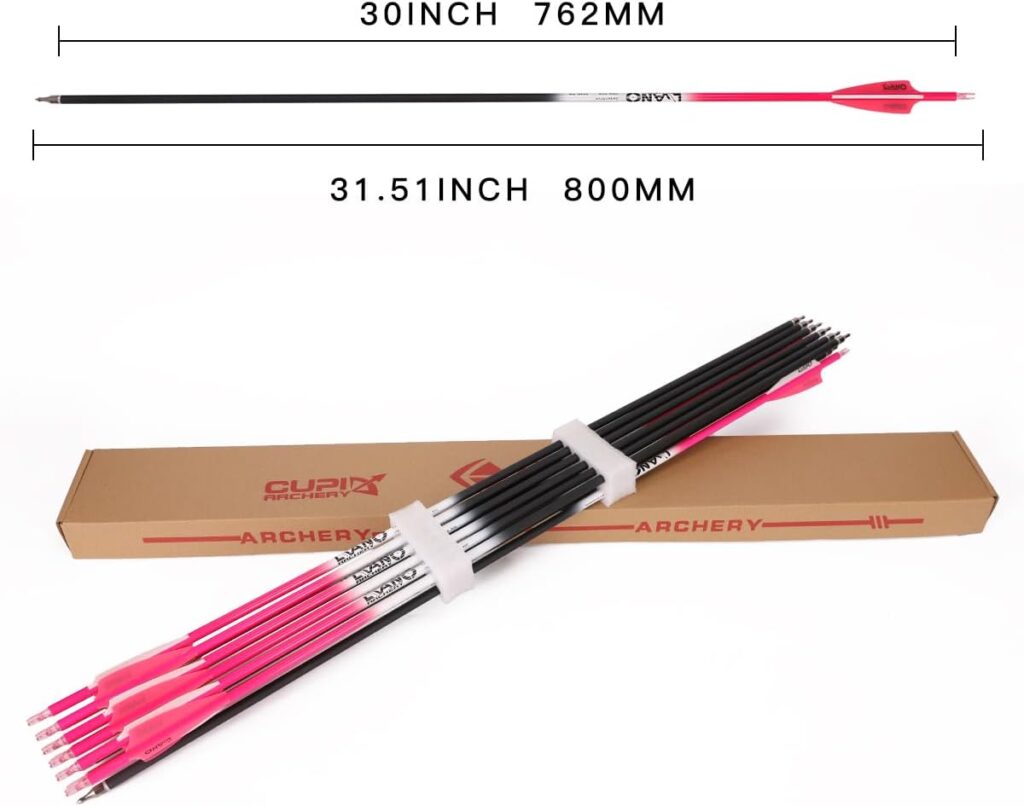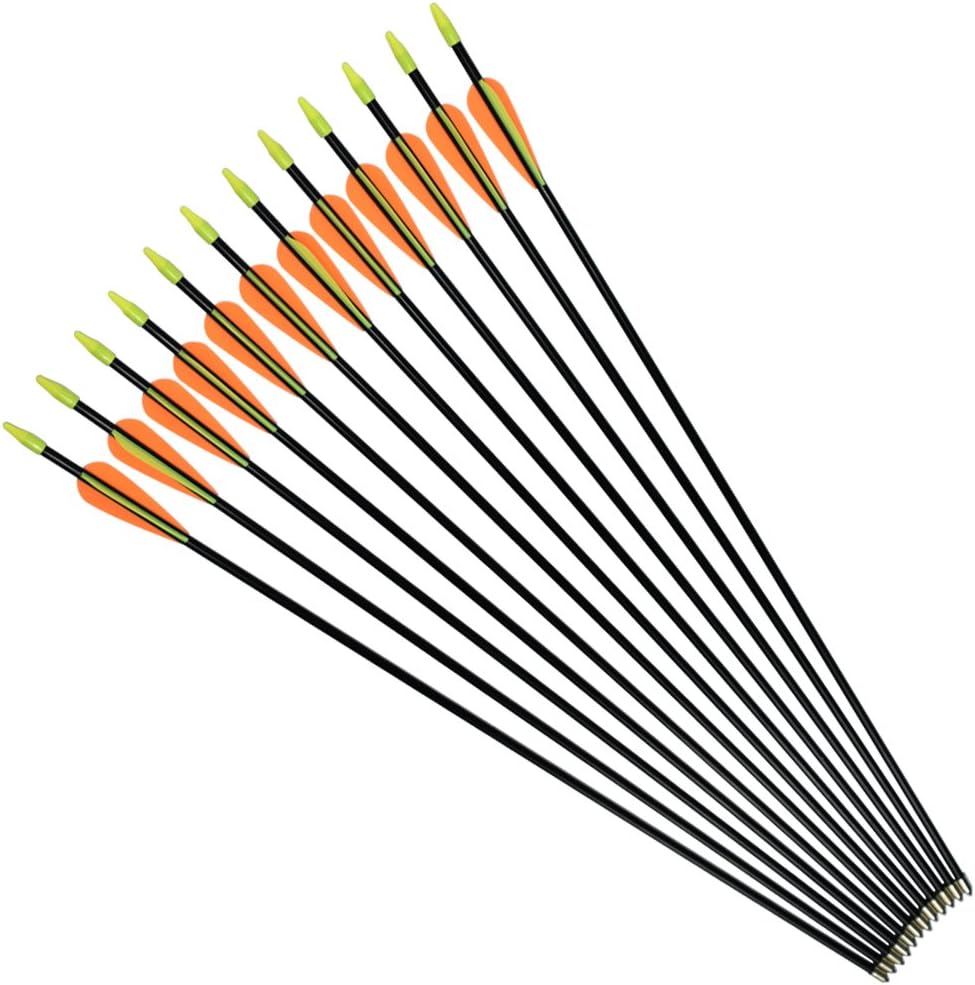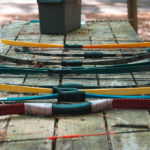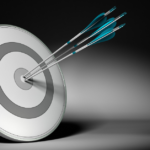As a novice archer, I remember feeling overwhelmed by all the technical jargon and options when it came to selecting arrows.
But after years of experience, I’ve learned that finding the right arrows doesn’t require an advanced physics degree.
In fact, it’s one of the most important steps you’ll take as you begin your archery practice, laying the groundwork for developing your skills and truly enjoying the sport.
Many beginners make the mistake of either buying the cheapest arrows they can find or splurging on high-end equipment they’re not ready to use effectively. Both approaches often lead to frustration and can hinder progress.
The key is finding that sweet spot – arrows that are forgiving enough for a beginner but high-quality enough to grow with you as your skills improve.
Just a heads-up: This post contains affiliate links, meaning if you click and make a purchase, I may earn a small commission—at no extra cost to you. I only recommend arrows that I genuinely believe will help novice archers improve their skills.
Now, let’s dive into finding the best arrows to kickstart your archery journey!
Understanding Arrow Basics
Before we dive into specific recommendations, it’s crucial to understand the key components of an arrow:
Shaft
The shaft is the main body of the arrow. For beginners, it’s typically made of aluminum, carbon, or fiberglass.
Each material has distinct advantages and drawbacks, which we’ll explore in detail.
Fletching
Fletching refers to the vanes or feathers at the back of the arrow that stabilizes its flight. As a beginner, you’ll likely start with plastic vanes, which are more durable and weather-resistant than natural feathers.
Nock
The nock is the plastic insert at the rear of the arrow that clips onto the bowstring. It’s essential for consistent arrow placement and release.
Tip
For beginners, the tip will usually be a field point, which is ideal for target practice. As you advance, you might explore other options like broadheads for hunting.
Best Arrow Materials for Novices
Aluminum Arrows: The Reliable Starter
Aluminum arrows are often the go-to choice for beginners, and for good reason. They offer a great balance of durability, consistency, and affordability.
Here’s why they’re an excellent choice:
- Durability: Aluminum arrows can take a beating, which is perfect when you’re still working on your accuracy.
- Cost-effectiveness: They’re generally less expensive than carbon arrows, allowing you to buy more for practice.
- Consistency: Aluminum arrows are manufactured with tight tolerances, ensuring each arrow in your set performs similarly.
- Easy maintenance: They’re simple to inspect for damage and straighten if bent slightly.
Look for arrows like the Easton Jazz or XX75 Platinum Plus. These are tried-and-true options that have helped countless beginners find their footing in archery.
Carbon Arrows: The Performance Upgrade
As you progress in your archery practice, you might consider upgrading to carbon arrows. While they’re a bit pricier, they offer some significant advantages:
- Increased speed and accuracy: Carbon arrows are lighter and stiffer, which translates to faster flight and potentially better accuracy.
- Durability against bending: Unlike aluminum, carbon arrows won’t bend permanently if they hit a hard target.
- Weather resistance: Carbon arrows are less affected by temperature changes, maintaining consistent performance in various conditions.
If you’re ready to invest a bit more, the Carbon Express Predator II or Easton Inspire are excellent choices for beginners looking to step up their game.
Fiberglass Arrows: The Youth Option
Primarily used in youth archery programs, fiberglass arrows have their place in the beginner’s arsenal:
- Extreme durability: These arrows can withstand repeated impacts, making them ideal for group lessons or camps.
- Low cost: Perfect for programs that need to outfit many new archers on a budget.
- Safety: Their flexibility reduces the risk of splintering, a crucial factor when working with young archers.
Choosing the Right Arrow Spine
Arrow spine is a crucial factor that many beginners overlook. It refers to the arrow’s stiffness and plays a significant role in accuracy.
Here’s what you need to know:
- Match to your bow: The correct spine depends on your bow’s draw weight and your draw length.
- Too stiff or too flexible: An improperly spined arrow will fly erratically, leading to poor accuracy and frustration.
- Use a spine chart: Most arrow manufacturers provide spine charts to help you choose the right arrows based on your bow’s specifications.
When in doubt, visit a local archery shop. They can help you decide the correct spine based on your specific setup and shooting style.
Arrow Length: Finding Your Fit
As a beginner, it’s better to err on the side of caution and choose slightly longer arrows. Here’s why:
- Safety first: Longer arrows reduce the risk of the arrow falling off the rest during draw, which can lead to dry firing and potential injury.
- Room for growth: As your form improves, you might find your draw length increasing slightly.
Longer arrows give you room to adjust.
- Forgiveness: Longer arrows are generally more forgiving of minor form inconsistencies.
A good rule of thumb is to choose arrows that extend 1-2 inches beyond the arrow rest when at full draw. This provides a margin of safety and allows for adjustments as your form improves.
Fletching: Vanes vs. Feathers
For novice archers, vanes are generally the way to go. Here’s why:
- Durability: Plastic vanes can withstand more abuse than natural feathers, which is crucial when you’re still working on your technique.
- Weather resistance: Vanes perform consistently in various weather conditions, unlike feathers which can be affected by moisture.
- Versatility: Vanes work well with both recurve and compound bows, giving you flexibility as you explore different styles of archery.
Look for arrows with 3-4 inch vanes for a good balance of stability and speed. As you advance, you might experiment with different fletching configurations to fine-tune your arrow flight.
Field Tips: Your Target Practice Companion
When you’re starting out, field tips are your best friend. Here’s why:
- Safety: Field tips are less likely to cause injury compared to broadheads.
- Target-friendly: They cause less damage to targets, saving you money in the long run.
- Cost-effective: Field tips are cheaper and can be reused many times.
- Consistency: They provide a consistent weight and profile for practicing your accuracy.
Save the broadheads for when you’re ready to move into hunting or more advanced target archery.
Arrow Weight: Finding the Balance
Arrow weight is a crucial factor that affects both the arrow’s flight characteristics and the bow’s performance. For beginners, a mid-weight arrow is usually the best choice:
- Balance of speed and stability: Mid-weight arrows offer a good compromise between the speed of lighter arrows and the stability of heavier ones.
- Reduced hand shock: Heavier arrows absorb more energy from the bow, reducing vibration and noise.
- Improved durability: Mid-weight arrows are less likely to be damaged by impacts compared to ultra-light arrows.
Aim for arrows with a total weight (including tip) of around 7-8 grains per pound of draw weight. This provides a good starting point for most beginners.
Straightness and Tolerances: How Much Does It Matter?
While professional archers might obsess over arrow straightness measured in thousandths of an inch, as a beginner, you don’t need to worry about extreme precision. Here’s what to look for:
- Straightness tolerance: Arrows with a straightness tolerance of .003″ to .006″ are more than adequate for beginners.
- Weight tolerance: Aim for arrows with a weight tolerance of ±1 grain within a set.
These specifications offer a good balance of performance and affordability. As your skills improve, you can always upgrade to arrows with tighter tolerances.
Nock Compatibility: Ensuring a Perfect Fit
The nock is your arrow’s connection to the bowstring, so it’s crucial to get it right. Here’s what to consider:
- Bowstring compatibility: Ensure the nocks on your arrows are compatible with your bowstring thickness.
- Release method: Different release techniques (finger release vs. mechanical release) may require different nock types.
- Nock style: Common types include standard nocks, pin nocks, and uni-bushings with replaceable nocks.
If you’re unsure about nock compatibility, bring your bow to an archery shop when purchasing arrows. They can confirm a perfect match.
Maintenance and Inspection: Keeping Your Arrows in Top Shape
Regular maintenance and inspection of your arrows are crucial for both safety and performance. Here’s what to look out for:
- Shaft integrity: Check for cracks, splinters, or dents in the arrow shaft.
- Fletching condition: Ensure vanes or feathers are securely attached and undamaged.
- Nock security: Check that nocks are tight and undamaged.
- Tip tightness: Confirm that field tips are securely fastened.
Replace any damaged arrows immediately. It’s not worth risking injury or compromising your accuracy with damaged equipment.
Budget Considerations: Getting the Most Bang for Your Buck
As a beginner, it’s tempting to either go for the cheapest option or splurge on top-of-the-line gear. Neither approach is ideal.
Here’s how to strike a balance:
- Prioritize durability: Invest in arrows that can withstand frequent practice and the occasional miss.
- Consider value packs: Many manufacturers offer sets of arrows at a discounted rate.
- Factor in replacements: Budget for replacing arrows as they inevitably get damaged or lost.
- Think long-term: Slightly more expensive arrows that last longer may be more cost-effective in the long run.
Invest in a dozen arrows to start. This gives you plenty for practice while allowing for inevitable losses and damage.
Exercises to Reinforce Your Arrow Knowledge
Arrow Inspection Challenge
Carefully examine each arrow in your set, looking for any signs of damage or wear. This will help you develop a keen eye for maintaining your equipment.
Spine Chart Navigation
Using an arrow spine chart and your bow’s specifications, decide the correct spine for your setup. This exercise will deepen your understanding of how different factors affect arrow selection.
Flight Observation
Shoot arrows with different fletching configurations (if available) and observe how they affect arrow flight. This hands-on experience will help you understand the importance of fletching in arrow performance.
Weight Comparison
If possible, try shooting arrows of different weights and observe how they affect your accuracy and the bow’s feel. This will give you a practical understanding of how arrow weight influences performance.
Nock Rotation Experiment
Try rotating the nock of your arrows slightly between shots and see how it affects your grouping. This will show the importance of consistent nock alignment.
People Also Asked
What are the best arrows for beginners?
For most beginners, aluminum arrows like the Easton Jazz or XX75 Platinum Plus are excellent choices. They offer a good balance of durability, consistency, and affordability.
How do I know what size arrows to buy?
Arrow size depends on your draw length and bow’s draw weight. As a general rule, choose arrows that extend 1-2 inches beyond the arrow rest when at full draw.
Consult a spine chart or visit an archery shop for precise sizing.
Are carbon arrows better than aluminum?
Carbon arrows offer some advantages like increased speed and weather resistance, but they’re also more expensive. For beginners, aluminum arrows are often the better choice because of their durability and cost-effectiveness.
How many arrows should a beginner buy?
A set of 12 arrows is a good starting point for most beginners. This provides enough for regular practice while accounting for potential losses or damage.
What arrow spine do I need?
The correct arrow spine depends on your bow’s draw weight, your draw length, and the arrow’s length. Use a manufacturer’s spine chart or ask with an archery pro shop to decide the right spine for your setup.
Are vanes or feathers better for beginners?
For most beginners, vanes are the better choice. They’re more durable, weather-resistant, and work well with both recurve and compound bows.
How often should I replace my arrows?
Replace arrows immediately if you notice any damage like cracks, splits, or severe bends. With proper care, a set of arrows can last for many practice sessions, but regular inspection is crucial.
What’s the difference between field points and broadheads?
Field points are used for target practice and are safer and more economical. Broadheads are sharp hunting tips used for taking game.
Beginners should start with field points.
Can I use hunting arrows for target practice?
While you can use hunting arrows for target practice, it’s generally more cost-effective to use dedicated target arrows with field points. Save your hunting arrows for their intended purpose.
How do I know if my arrows are too stiff or too weak?
Arrows that are too stiff or too weak will fly erratically. If your arrows consistently veer to one side or fishtail in flight, it may show an incorrect spine.
Consult with an experienced archer or pro shop for help diagnosing and correcting the issue.
Key Takeaways
- Aluminum arrows are an excellent starting point for most beginners because of their durability and cost-effectiveness.
- Proper arrow spine is crucial for accuracy and depends on your bow’s specifications.
- Choose arrows slightly longer than necessary when starting out for safety and room to grow.
- Regular inspection and maintenance of your arrows are essential for safety and performance.
- Invest in mid-range arrows that balance quality and affordability to support your development as an archer.






